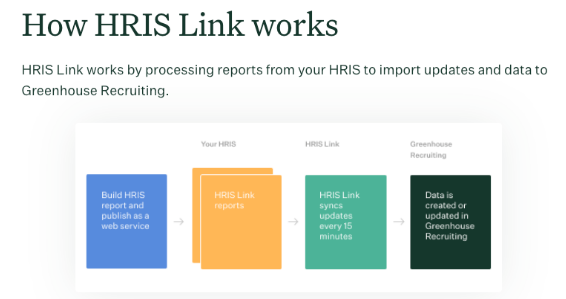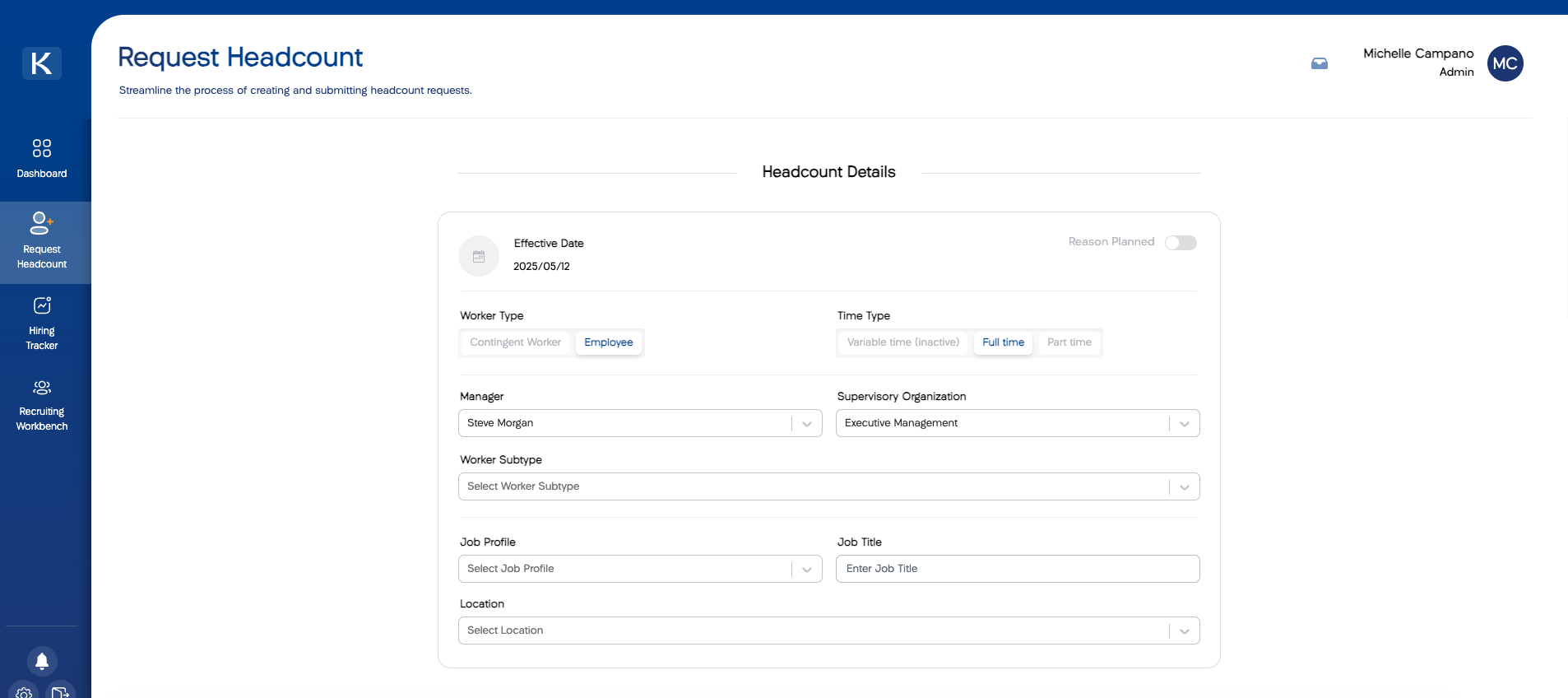Comparing 3 Options for Workday-Greenhouse Integration for Headcount Planning: Features, Advantages, and Limitations
Ever found yourself in a meeting where Finance is questioning why your headcount numbers in Workday don't align with what your recruiting team sees in Greenhouse? 🤔
This frustrating disconnect is a common symptom of integration challenges between these critical systems. While Workday excels at managing employee data and organizational structures, and Greenhouse streamlines your recruitment process, creating a seamless connection between them for effective headcount planning remains surprisingly complex.
Currently, organizations planning their workforce in Workday have two primary Greenhouse integration options: custom Workday integration using Workday Studio or Greenhouse integration using HRIS Link. Each approach offers different capabilities that significantly impact your headcount planning accuracy, recruitment efficiency, and cross-functional alignment.
As implementation specialists with over 50 years of combined experience in the Workday ecosystem, we've guided numerous organizations through these Greenhouse integration challenges. We've discovered that successful headcount planning integration depends on understanding the technical nuances of each option and how they align with your organization's specific workforce planning processes.
In this guide, we'll examine the capabilities, advantages, and limitations of each Greenhouse integration approach and introduce an emerging solution that's transforming how organizations manage Workday headcount planning across systems. Our goal is to help you select the right approach for your organization's unique needs.
The Headcount Planning Data Flow Between Workday and Greenhouse
Before diving into specific Greenhouse integration options, it's essential to understand the ideal flow of headcount data between Workday and Greenhouse. This clarifies why Workday integration isn't simply a technical connection but a strategic workflow that supports your entire workforce planning process.
Here's how headcount data should flow between Workday and Greenhouse:
Headcount Approval in Workday: The process begins with creating and approving positions in Workday, establishing the foundation for your hiring process and budget allocation.
Job Requisition Creation: Once positions are approved, a job requisition is initiated in Workday, connecting budget allocation with specific role requirements and department needs and sending the data to Greenhouse.
Data Transfer to Greenhouse: The Greenhouse integration transmits approved position/headcount and requisition data to Greenhouse, including critical details like compensation data, reporting structure, job level, and other role specifications.
Recruiting Process in Greenhouse: Recruiters utilize Greenhouse to manage candidate pipelines and offer workflows, working within the parameters set by the approved headcount.
Offer Development: When a candidate is selected, offer details are created in Greenhouse, aligned with the approved headcount specifications.
Hire to Workday: Finally, candidate and offer information flows back to Workday via Workday integration, completing the hiring process and initiating onboarding.
Different integration approaches handle these steps with varying degrees of automation and flexibility. Understanding these differences is crucial for selecting the right solution for your organization.
Studio: Custom Workday Integrations
Workday Studio represents the most comprehensive and flexible approach to Workday integrations, designed specifically for complex data flows that require extensive customization, making it particularly relevant for headcount planning integration with Greenhouse.
Think of Workday Studio as your integration command center, providing complete control over how headcount data moves between systems. It's typically the default consideration when organizations need a robust connection between Workday and any Applicant Tracking System (ATS), including Greenhouse.
Workday Studio enables developers to create tailored Workday-Greenhouse integrations that manage both outbound processes (sending headcount and requisition data from Workday to Greenhouse) and inbound flows (importing candidate and offer information from Greenhouse back to Workday for hiring). This involves:
Developing specialized reports (Report-As-A-Service or RaaS)
Creating transformation mappings to format data appropriately
Establishing detailed field connections between systems
Successful implementation requires developers with expertise in both Workday's technical framework and the intricacies of Greenhouse integration APIs.
Key Capabilities
Workday Studio provides powerful development tools for creating highly customized integration solutions:
Comprehensive framework for building complex, tailored integrations
Advanced data transformation and field mapping functionality
Support for diverse integration types and data formats
Integrated testing and troubleshooting capabilities
Custom report development for precise data extraction
Advantages
Despite its complexity, Workday Studio offers significant benefits for headcount planning integration:
Complete customization: You gain full control over data flows between systems, allowing you to tailor the integration to your organization's specific headcount planning requirements and workflows.
Comprehensive bidirectional capability: Studio manages both outbound (Workday to Greenhouse) and inbound (Greenhouse to Workday) data exchanges within a unified solution, ensuring complete synchronization throughout the entire headcount lifecycle.
Limitations
Workday Studio integration comes with important considerations:
Significant implementation investment: The combination of specialized developer costs, initial implementation ($30,000-$50,000), and annual maintenance (about $5,000-$10,000) represents a substantial financial commitment. Organizations may benefit from phased implementation to distribute costs and focus on essential functionality.
Specialized technical requirements: Implementation demands developers specifically trained in Workday Studio who also understand Greenhouse integration requirements. This specialized knowledge is necessary because Studio utilizes Workday's proprietary integration framework. Organizations should partner with Workday integration specialists or invest in internal team training for long-term maintenance.
Change management complexity: When headcount planning requirements evolve, such as adding new compensation elements or updating position attributes, administrators cannot simply adjust settings. Each modification requires developer intervention to update Workday integration logic, reports, and transformation mappings. Organizations should design their integration architecture with future adaptability in mind and maintain comprehensive documentation for all customizations.
HRIS Link: Greenhouse's Streamlined Workday Integration
Greenhouse's HRIS Link offers a more standardized approach to Workday integration. Unlike the comprehensive development environment of Workday Studio, HRIS Link provides a pre-packaged solution specifically designed to manage outbound data flow from Workday to Greenhouse.
This Greenhouse-developed solution focuses on simplifying the Greenhouse integration process through standardized data mapping and regular synchronization, making it more accessible for organizations with limited technical resources.
Key Capabilities
HRIS Link includes several important technical features:
Frequent 15-minute synchronization intervals for near-real-time data updates
Pre-configured data mapping templates for standard Workday fields
Web service integration utilizing RaaS (Report-as-a-Service)
Client-managed report modifications
Integrated error detection and notification system
Customizable field mapping capabilities
Advantages
HRIS Link offers several noteworthy benefits:
Streamlined field configuration: Administrators can modify column headers and field mappings without developer assistance using RaaS (Report-as-a-Service) functionality.
Pre-built Greenhouse integration framework: Rather than developing custom Studio code, HRIS Link reduces implementation complexity by leveraging Workday's reporting capabilities to extract and transform data according to established templates.
Automated organizational synchronization: HRIS Link maintains consistency in user accounts, departments, and office structures through automatic updates, reducing manual data management requirements.
Limitations
While HRIS Link simplifies Greenhouse integration, it has important constraints:
One-directional flow: The most significant limitation is that HRIS Link only addresses outbound integration (Workday to Greenhouse). For a complete headcount management solution, organizations still need to implement Workday Studio integration for inbound data flow (Greenhouse to Workday), which means you still face some Studio development complexity. This necessitates comprehensive testing and potentially phased implementation.
Headcount management workflow challenges: Recruiters may still need to interact with Workday for job requisition management and governance, creating potential experience issues. This dual-system approach can lead to duplicate data entry and synchronization challenges, requiring clearly defined workflows and data validation processes.
Data consistency challenges: With data synchronizing every 15 minutes, inconsistencies can emerge when changes occur simultaneously in both systems. Organizations should implement regular data audits and establish clear ownership guidelines for resolving data conflicts.
Kinnect: Your Comprehensive Headcount Management Software Solution
While evaluating traditional Greenhouse integration options, it's worth considering emerging solutions designed specifically to address headcount planning challenges in the Workday ecosystem. Kinnect represents a new approach that reimagines how these critical systems can work together to support comprehensive workforce planning.
Key Capabilities
Kinnect is a comprehensive headcount management software that brings several innovative features to the headcount planning landscape:
Unified headcount planning framework
Complete bidirectional Workday and Greenhouse integration functionality
Intuitive field mapping interface
Real-time data synchronization across HR, Recruiting, and Finance teams
Integrated data reconciliation tools
Enhanced recruiting team experience
Advantages
Kinnect addresses common headcount planning challenges through:
Seamless Greenhouse integration: These solutions enable direct Greenhouse integration while maintaining streamlined headcount planning processes. This approach combines the flexibility of custom Workday-Greenhouse integration with the reliability of standardized workflows.
Workday data synchronization: Kinnect ingests critical data from Workday (organizational structure, compensation parameters, position details, and employee information) and maintains synchronization with connected systems. They also transmit offer and candidate data to Workday to facilitate hiring and onboarding processes.
Simplified integration management: Rather than requiring multiple Workday integration points and complex mappings, Kinnect provides centralized management where data flows naturally between systems. Administrators can establish connections and field mappings within minutes, not weeks.
Built-in process automation: Kinnect incorporates automation capabilities that handle data synchronization, field updates, and headcount status changes, minimizing manual intervention and potential errors.
Unified headcount system of record: Kinnect establishes a single source of truth for headcount data that connects with Workday, eliminating the complications of maintaining headcount information across disparate systems. This approach significantly reduces data discrepancies and streamlines workforce planning.
Optimized recruiter experience: Recruiting teams can work primarily in their preferred system (Greenhouse) while the platform manages complex headcount planning processes behind the scenes. This reduces context-switching and allows greater focus on talent acquisition.
Ongoing Enhancements
As with any evolving technology, Kinnect continues to develop based on real-world implementation and feedback:
Advanced data reconciliation: We’re incorporating sophisticated Workday data reconciliation capabilities to ensure accuracy across integrated systems, addressing the common challenge of maintaining consistency when changes occur simultaneously.
Performance optimization: As Kinnect scales with enterprise customers, our developers are enhancing how the platform handles increasing data volumes and transaction frequencies to optimize performance.
Enhanced analytics: Based on implementation feedback, we’re developing additional reporting and analytics capabilities to provide deeper insights into headcount planning, recruiting capacity, and hiring trends.
This commitment to continuous improvement helps Kinnect evolve to meet emerging workforce planning requirements. Early adopters have the opportunity to shape future development direction through feedback and feature requests.
Selecting the Right Headcount Planning Integration Approach
Choosing the optimal Workday-Greenhouse integration solution depends on your organization's specific needs, technical capabilities, and long-term workforce planning strategy. Consider these factors when making your decision:
If your organization requires highly customized headcount planning workflows and has robust technical resources and a big budget, Workday Studio may be the most appropriate solution.
If you need a simpler outbound integration and can accommodate some Studio development for inbound processes, HRIS Link could be a suitable option.
If you want to simplify headcount planning across systems while maintaining seamless Workday and Greenhouse integration, newer comprehensive solutions like Kinnect warrant exploration.
Headcount planning technology continues to evolve with solutions like Kinnect, with innovative approaches challenging traditional integration models. Workday Studio and HRIS Link remain viable options, and organizations also increasingly seek comprehensive solutions like Kinnect that streamline entire workforce planning processes while maintaining robust integration capabilities.
For assistance evaluating these options in the context of your organization's specific needs, contact us to connect with our implementation team or book a demo to discuss your current challenges and develop a tailored integration strategy for optimizing headcount planning in your Workday environment.




